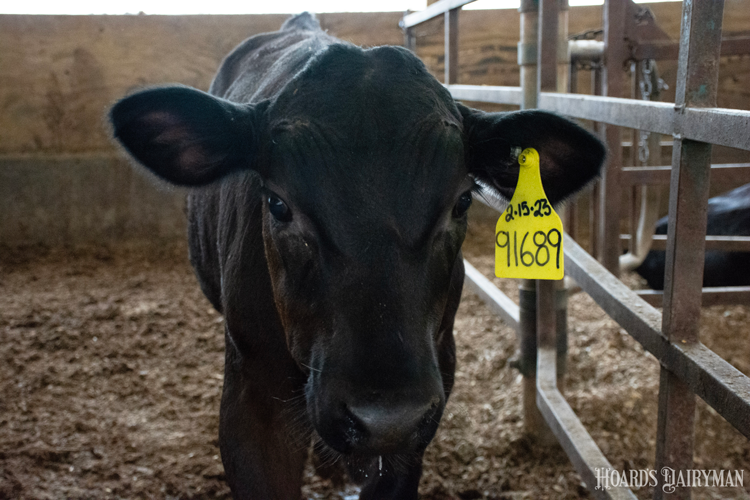
Liver abscesses have become a hot topic of discussion among many farmers, veterinarians, and slaughter plants across the nation as beef-on-dairy crosses have become more popular. At the recent Dairy Calf and Heifer Association annual meeting, Taylor Engle, D.V.M., stated that for certain breeds, liver abscesses occur only less than 2% of the time, while for other breeds of cattle, it can occur at an upward of 80%. For the last few years, the number of liver abscesses in slaughtered cattle has been averaging between 10% and 20%.
“Dairy-beef crosses are a population of cattle with a lot of different genetics. Liver abscesses in these animals are super variable and can be anywhere from 10% to 80%,” said Engle, a veterinarian with Four Star Vet Service in Dayton, Ohio.
Liver abscesses are defined as discrete, circumcised focal sites of bacterial infection. They occur due to the bacteria translocation from the rumen to the liver, resulting in polymicrobial infections. When these infections occur, a lot of bacteria are present, making them so detrimental.
From an economic standpoint, liver abscesses have a significant impact. Engle stated that in 2018, there was an estimated $60 million annual loss in the cattle industry due to liver abscesses. Since 2018, that number is assumed to be much higher.
Engle also associated liver abscesses with time, labor, and product losses. Slaughterhouses are spending more time and labor dealing with liver abscesses as these cattle come into the plant because if they rupture, it affects the rest of the meat. Cutting around liver abscesses also results in more wasted product.
As we continue to navigate beef-on-dairy crosses, it is important to remember that most liver abscesses are caused by a multitude of factors, including the vast variation in the industry’s infrastructure. Often the easiest thing to do is to blame the calf. “The calf is not the culprit, the calf is the victim — not the perpetrator,” stated Engle.
Calves are a reactive animal and will respond to the environments that we place them in. Nutritional changes, social changes, navel infections, and touch points (the number of times they are transferred place to place) are just some stressors that could impact the animal. Ultimately, the environment will dictate the genetic potential of that animal.
To prevent abscesses from forming, it is important to mitigate stressors that affect these animals. Calves utilize two lines of defense when it comes to maintaining overall health. The first is a series of natural barriers such as mucous, tears, gastric pH, saliva, and skin. Hydration drives this line of defense to fight off infections and diseases.
The second line of defense is also known as the immune response, which is where vaccines come into play. Typically, the biggest stressor for cattle is trucking. As calves are being transported, they may go hours without food or water, so it is critical to make sure they are hydrated prior to their journey. Engle recommended giving all calves electrolytes before they make their way onto the truck.
As beef-on-dairy crosses continue to become a more common sight on farms across the country, there are still a lot of unknowns that come with raising them. To prevent liver abscesses, Engle said to minimize high grain diets, and prevent rumenitis and acidosis by not overfeeding.








